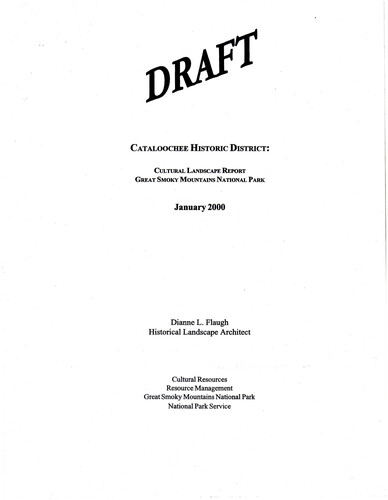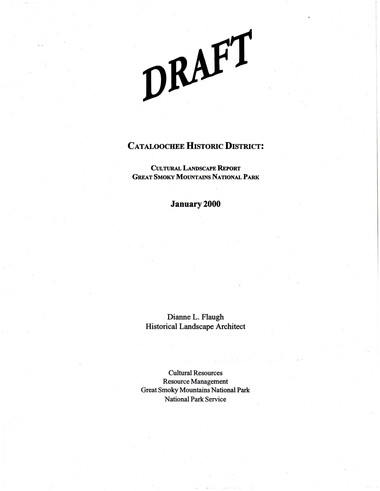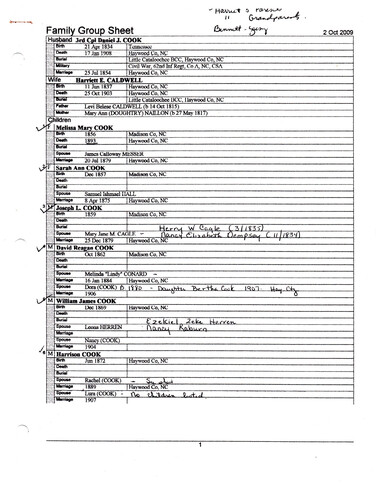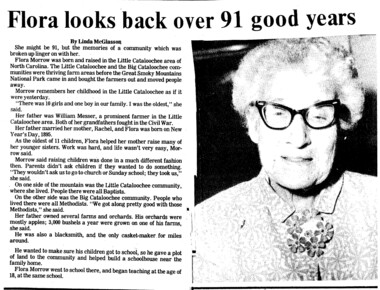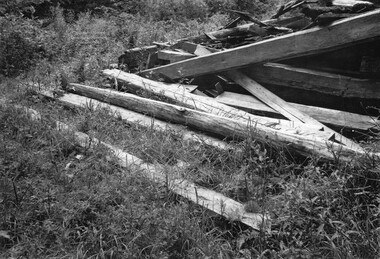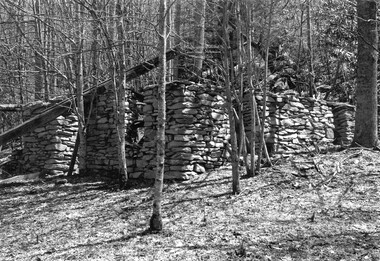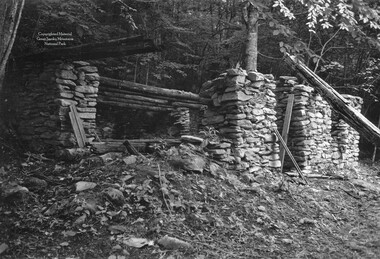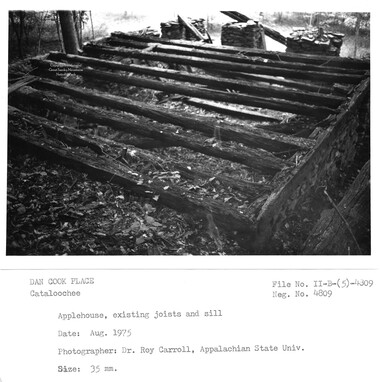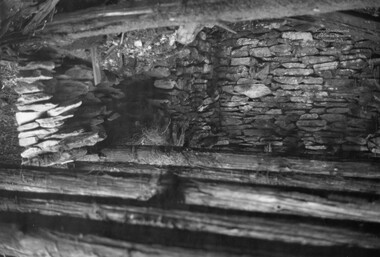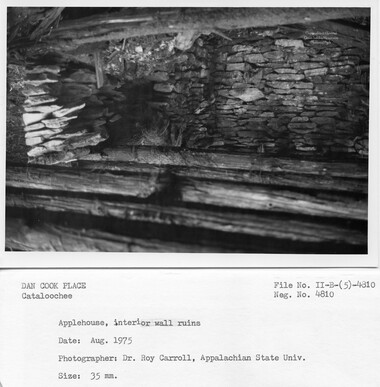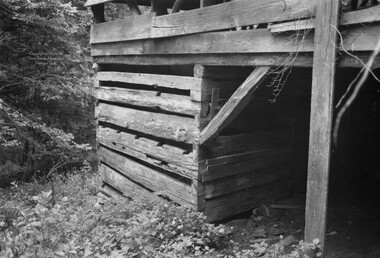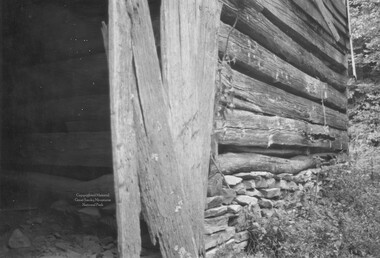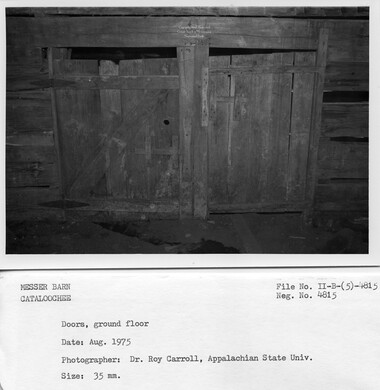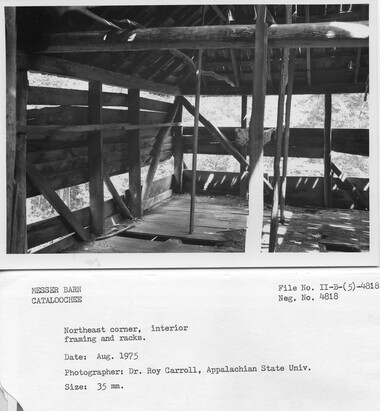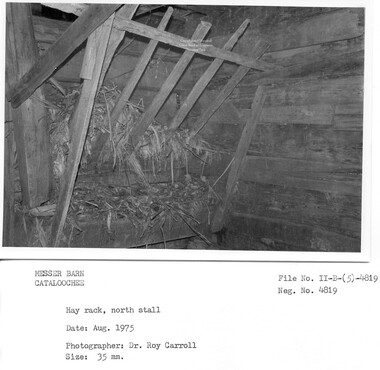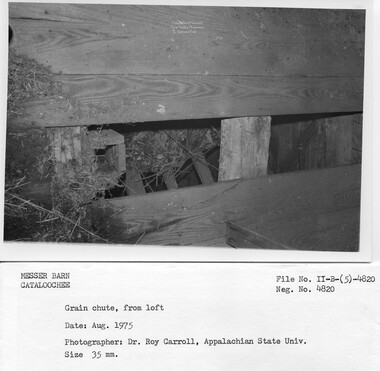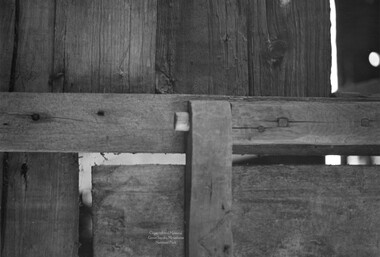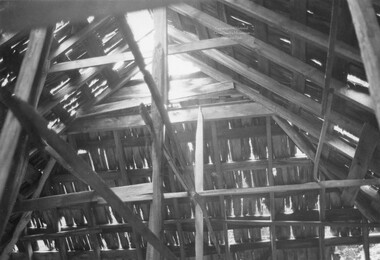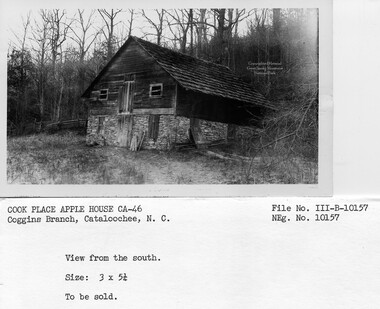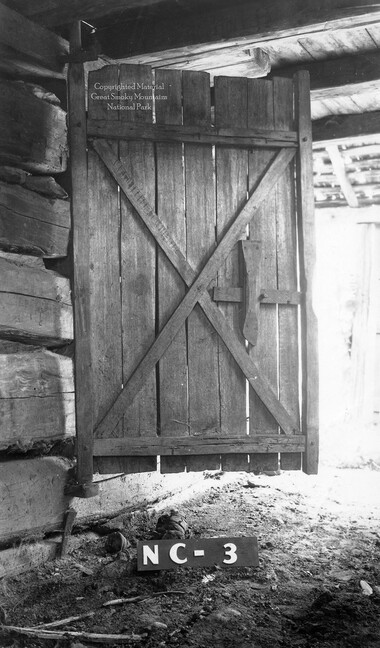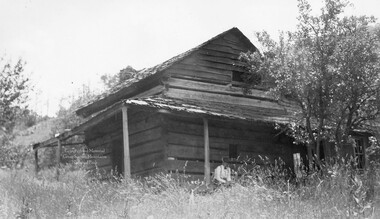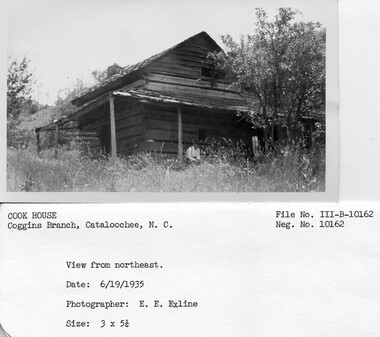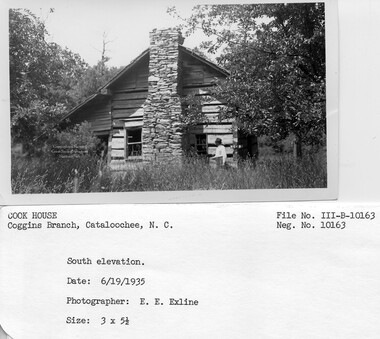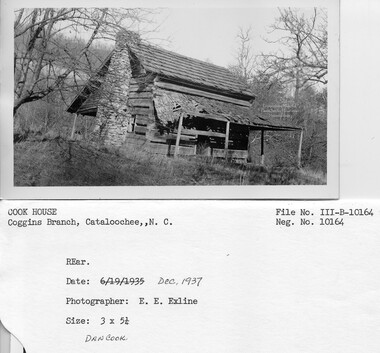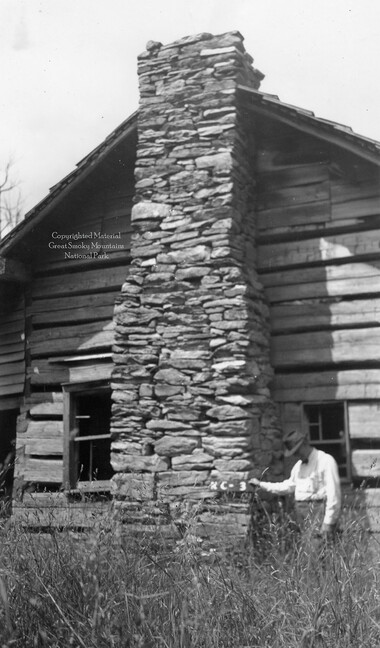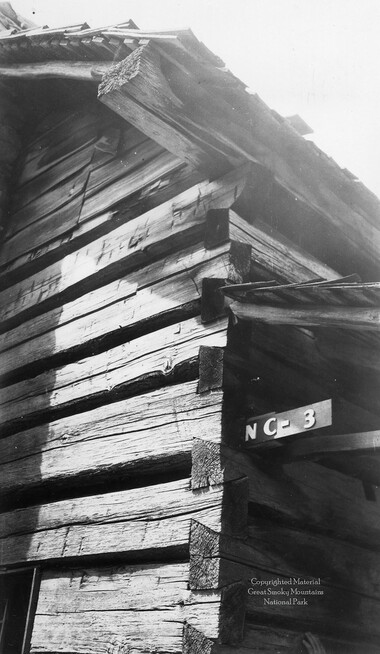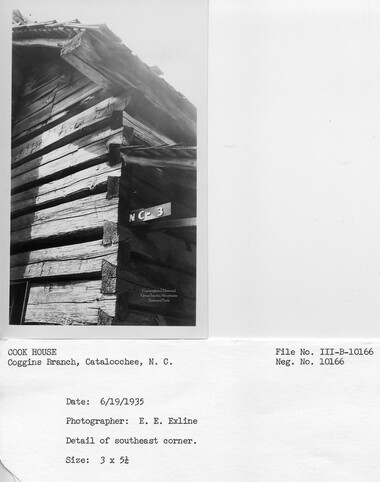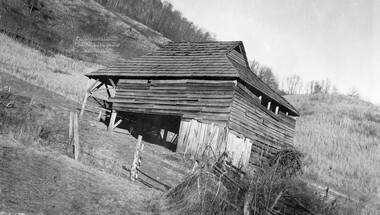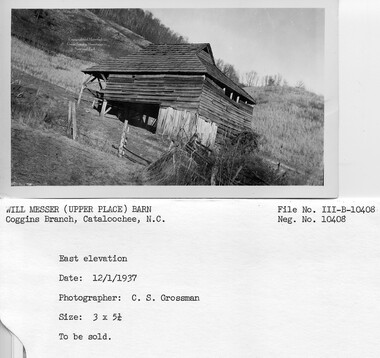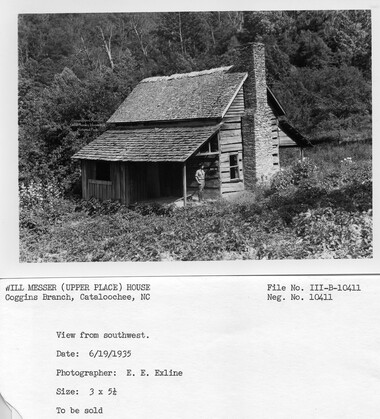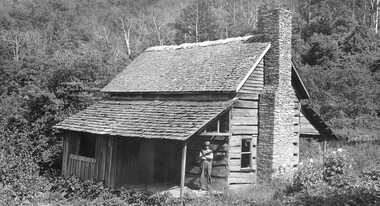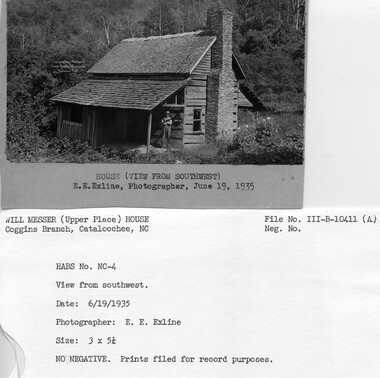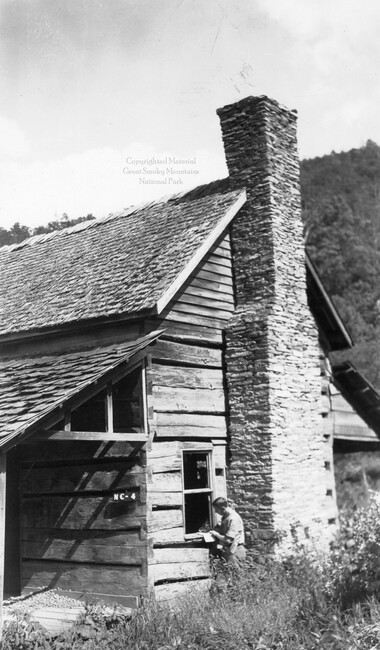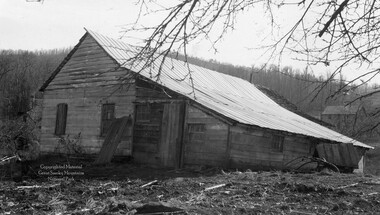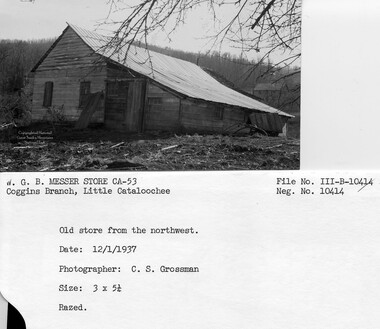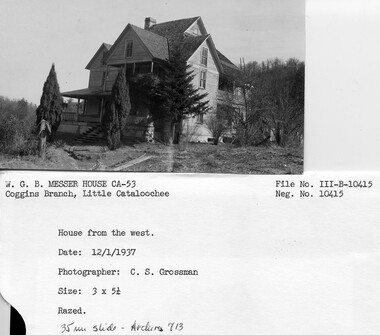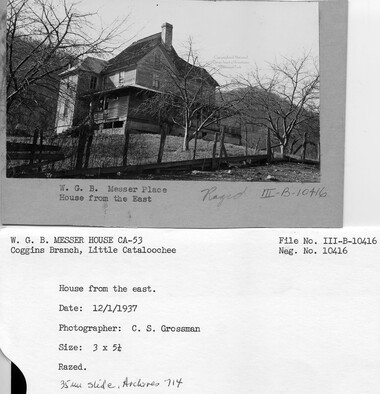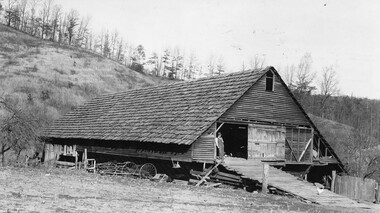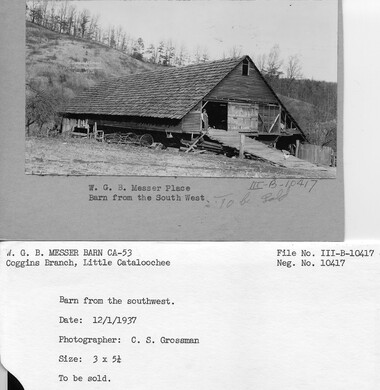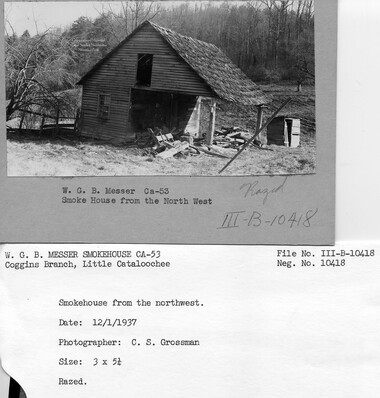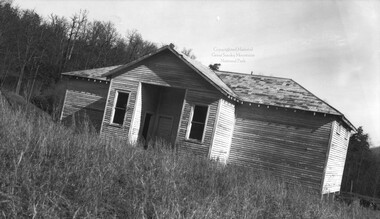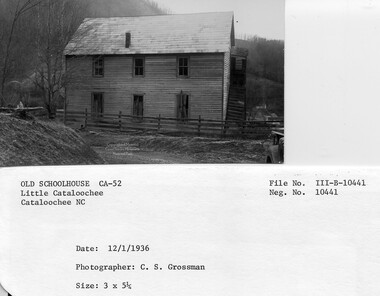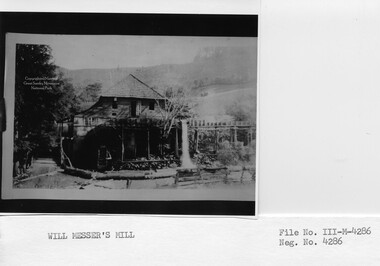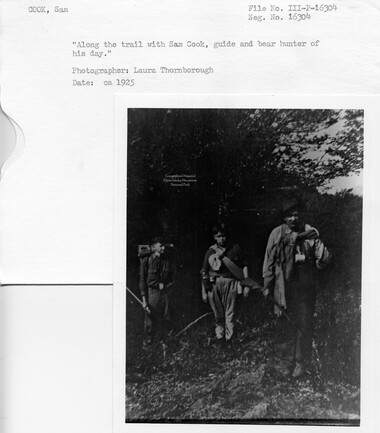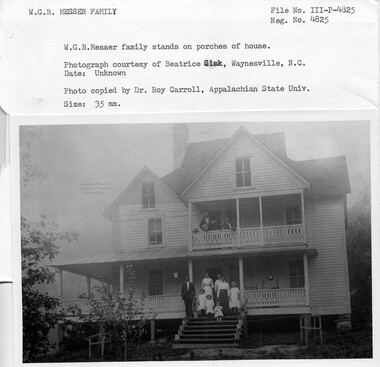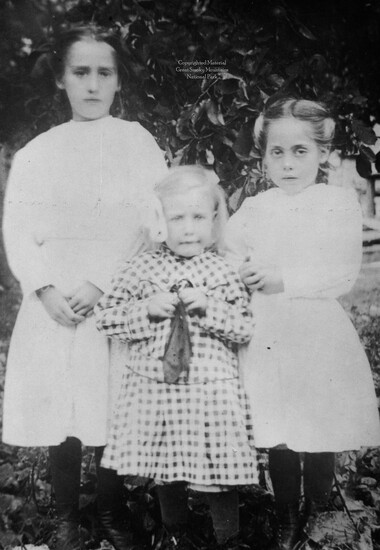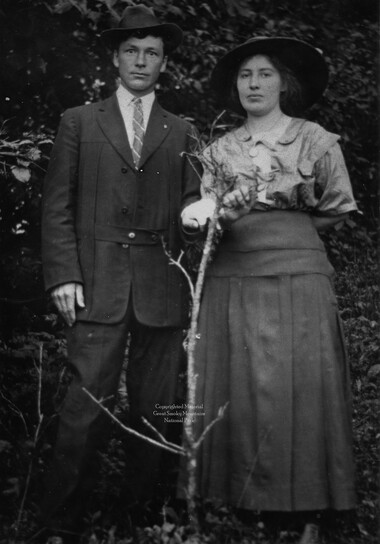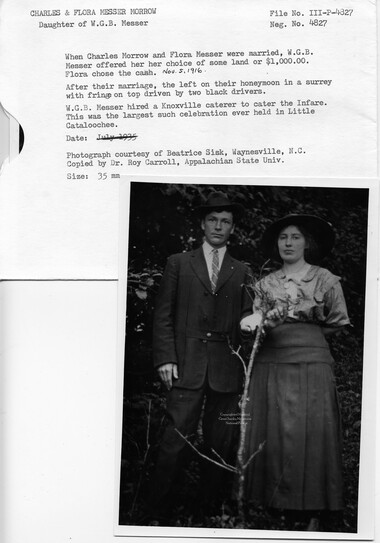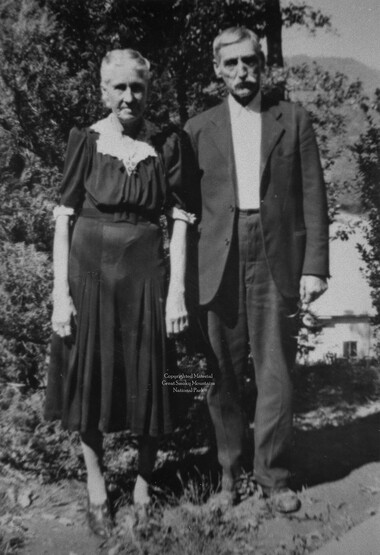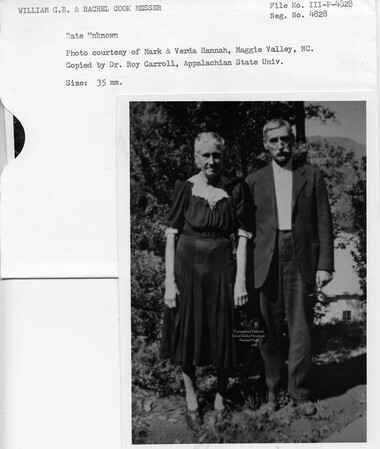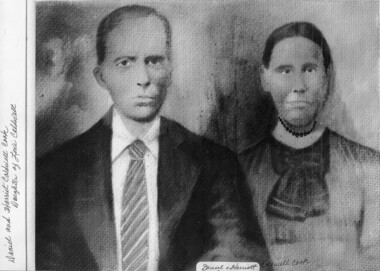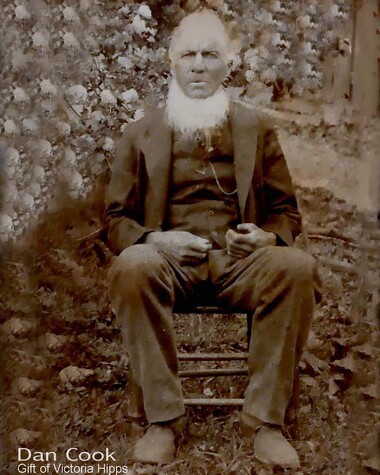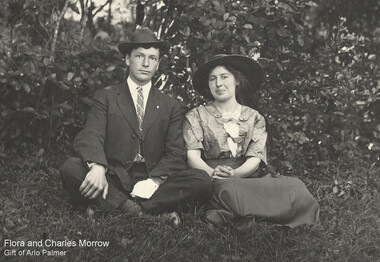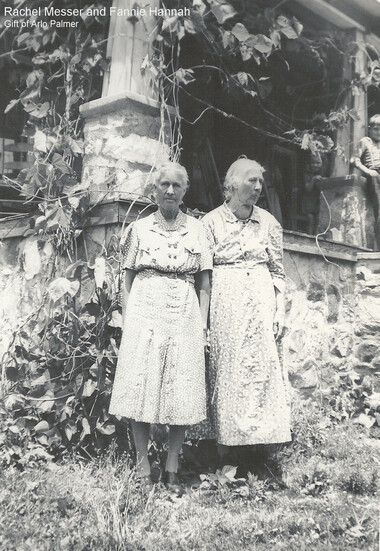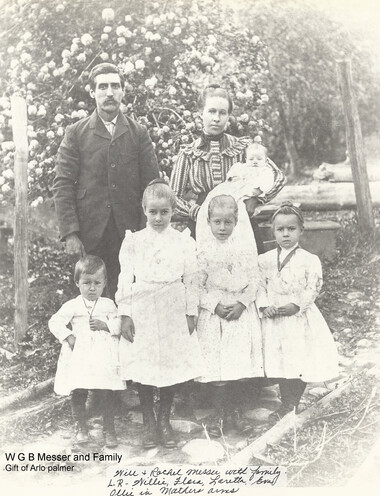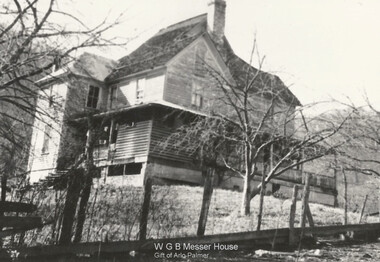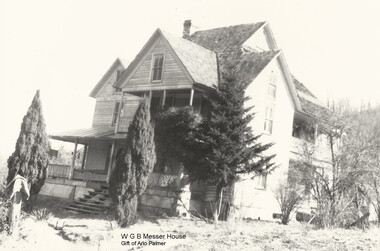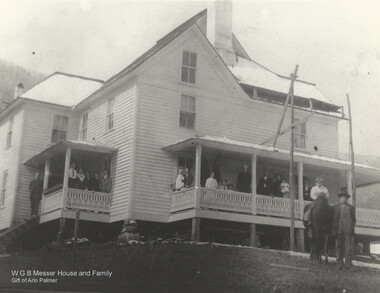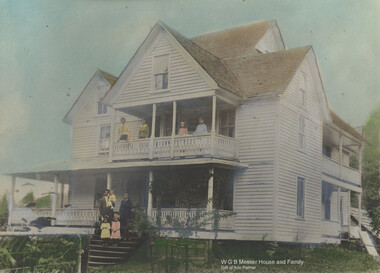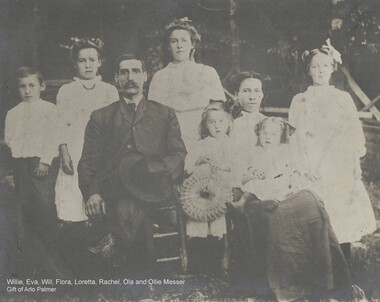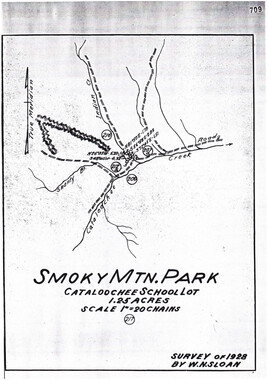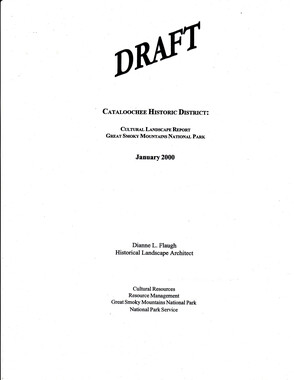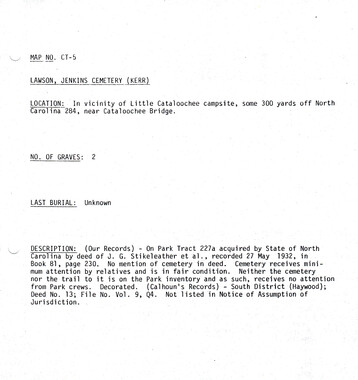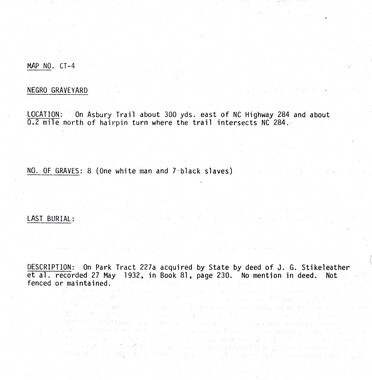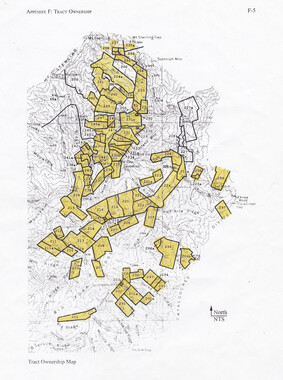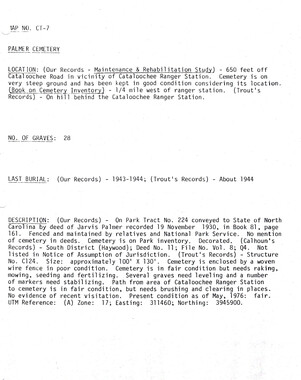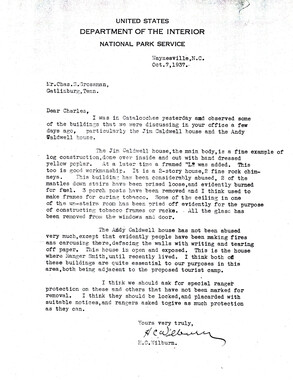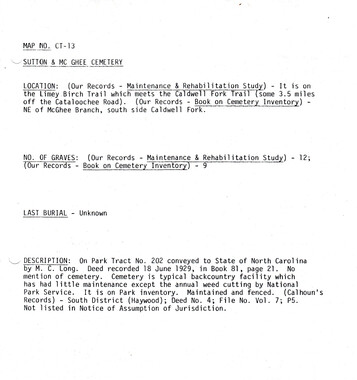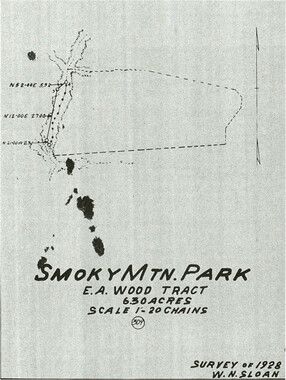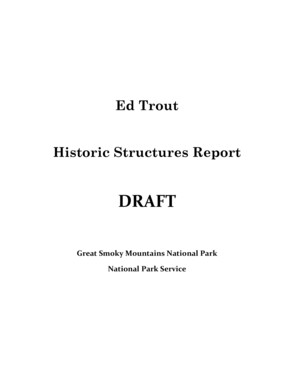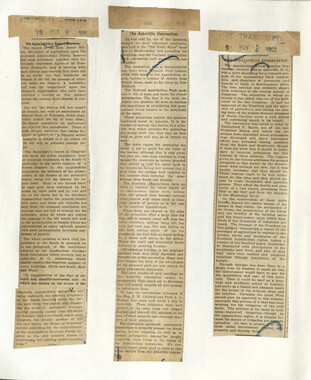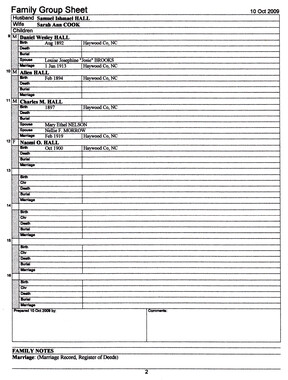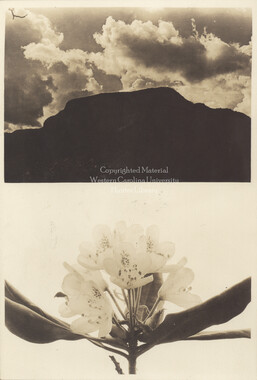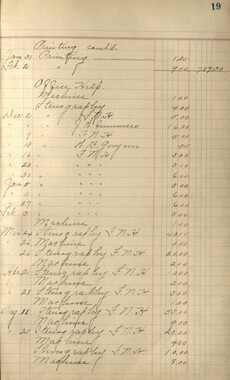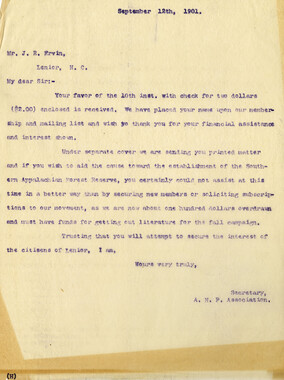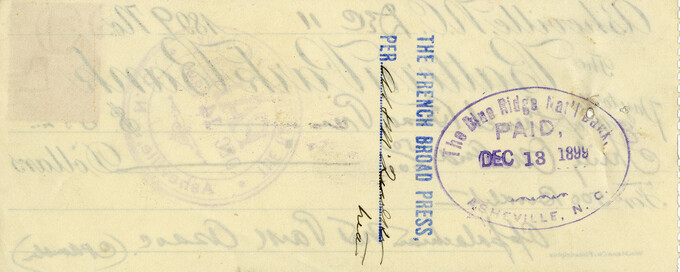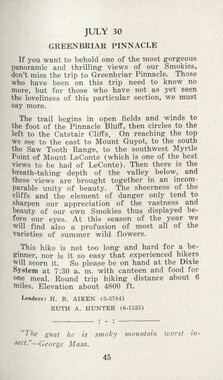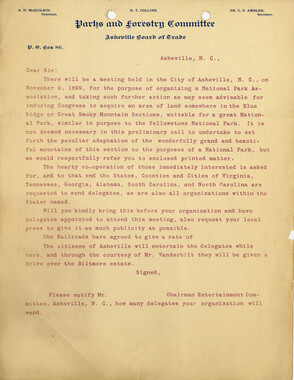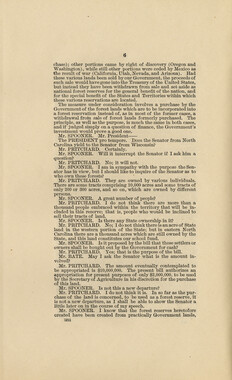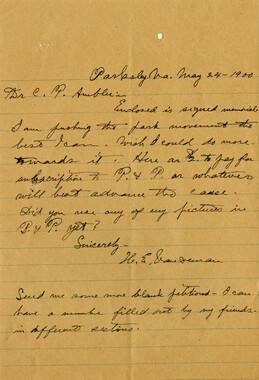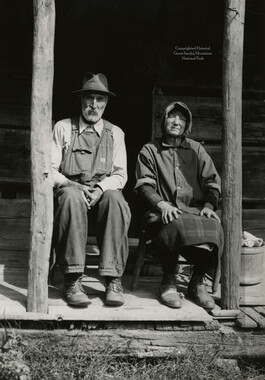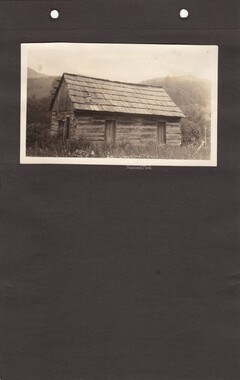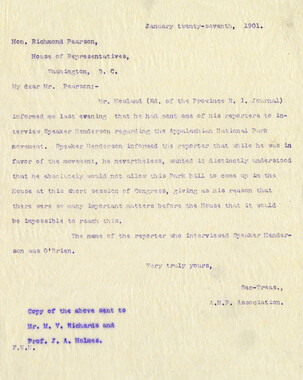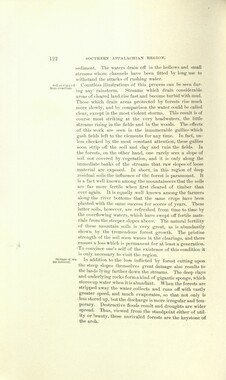Western Carolina University (20)
View all
- Canton Champion Fibre Company (2308)
- Cherokee Traditions (292)
- Civil War in Southern Appalachia (165)
- Craft Revival (1942)
- Great Smoky Mountains - A Park for America (2766)
- Highlights from Western Carolina University (430)
- Horace Kephart (941)
- Journeys Through Jackson (154)
- LGBTQIA+ Archive of Jackson County (85)
- Oral Histories of Western North Carolina (314)
- Picturing Appalachia (6772)
- Stories of Mountain Folk (413)
- Travel Western North Carolina (160)
- Western Carolina University Fine Art Museum Vitreograph Collection (129)
- Western Carolina University Herbarium (92)
- Western Carolina University: Making Memories (708)
- Western Carolina University Publications (2283)
- Western Carolina University Restricted Electronic Theses and Dissertations (146)
- Western North Carolina Regional Maps (71)
- World War II in Southern Appalachia (131)
University of North Carolina Asheville (6)
View all
- Allanstand Cottage Industries (62)
- Appalachian National Park Association (53)
- Bennett, Kelly, 1890-1974 (1388)
- Berry, Walter (76)
- Brasstown Carvers (40)
- Carver, George Washington, 1864?-1943 (26)
- Cathey, Joseph, 1803-1874 (1)
- Champion Fibre Company (233)
- Champion Paper and Fibre Company (297)
- Cherokee Indian Fair Association (16)
- Cherokee Language Program (22)
- Crowe, Amanda (40)
- Edmonston, Thomas Benton, 1842-1907 (7)
- Ensley, A. L. (Abraham Lincoln), 1865-1948 (275)
- Fromer, Irving Rhodes, 1913-1994 (70)
- George Butz (BFS 1907) (46)
- Goodrich, Frances Louisa (120)
- Grant, George Alexander, 1891-1964 (96)
- Heard, Marian Gladys (60)
- Kephart, Calvin, 1883-1969 (15)
- Kephart, Horace, 1862-1931 (313)
- Kephart, Laura, 1862-1954 (39)
- Laney, Gideon Thomas, 1889-1976 (439)
- Masa, George, 1881-1933 (61)
- McElhinney, William Julian, 1896-1953 (44)
- Niggli, Josephina, 1910-1983 (10)
- North Carolina Park Commission (105)
- Osborne, Kezia Stradley (9)
- Owens, Samuel Robert, 1918-1995 (11)
- Penland Weavers and Potters (36)
- Roberts, Vivienne (15)
- Roth, Albert, 1890-1974 (142)
- Schenck, Carl Alwin, 1868-1955 (1)
- Sherrill's Photography Studio (2565)
- Southern Highland Handicraft Guild (127)
- Southern Highlanders, Inc. (71)
- Stalcup, Jesse Bryson (46)
- Stearns, I. K. (213)
- Thompson, James Edward, 1880-1976 (226)
- United States. Indian Arts and Crafts Board (130)
- USFS (683)
- Vance, Zebulon Baird, 1830-1894 (1)
- Weaver, Zebulon, 1872-1948 (58)
- Western Carolina College (230)
- Western Carolina Teachers College (282)
- Western Carolina University (1794)
- Western Carolina University. Mountain Heritage Center (18)
- Whitman, Walt, 1819-1892 (10)
- Wilburn, Hiram Coleman, 1880-1967 (73)
- Williams, Isadora (3)
- Cain, Doreyl Ammons (0)
- Crittenden, Lorraine (0)
- Rhodes, Judy (0)
- Smith, Edward Clark (0)
- Appalachian Region, Southern (2569)
- Asheville (N.C.) (1923)
- Avery County (N.C.) (26)
- Blount County (Tenn.) (161)
- Buncombe County (N.C.) (1672)
- Cherokee County (N.C.) (283)
- Clay County (N.C.) (555)
- Graham County (N.C.) (233)
- Great Smoky Mountains National Park (N.C. and Tenn.) (519)
- Haywood County (N.C.) (3524)
- Henderson County (N.C.) (70)
- Jackson County (N.C.) (4694)
- Knox County (Tenn.) (25)
- Knoxville (Tenn.) (12)
- Lake Santeetlah (N.C.) (10)
- Macon County (N.C.) (420)
- Madison County (N.C.) (212)
- McDowell County (N.C.) (39)
- Mitchell County (N.C.) (132)
- Polk County (N.C.) (35)
- Qualla Boundary (981)
- Rutherford County (N.C.) (76)
- Swain County (N.C.) (2115)
- Transylvania County (N.C.) (270)
- Watauga County (N.C.) (12)
- Waynesville (N.C.) (84)
- Yancey County (N.C.) (72)
- Aerial Photographs (3)
- Aerial Views (60)
- Albums (books) (4)
- Articles (1)
- Artifacts (object Genre) (228)
- Bibliographies (1)
- Biography (general Genre) (2)
- Cards (information Artifacts) (38)
- Clippings (information Artifacts) (191)
- Crafts (art Genres) (622)
- Depictions (visual Works) (21)
- Design Drawings (1)
- Drawings (visual Works) (184)
- Envelopes (73)
- Facsimiles (reproductions) (1)
- Fiction (general Genre) (4)
- Financial Records (12)
- Fliers (printed Matter) (67)
- Glass Plate Negatives (381)
- Guidebooks (2)
- Internegatives (10)
- Interviews (815)
- Land Surveys (102)
- Letters (correspondence) (1013)
- Manuscripts (documents) (618)
- Maps (documents) (177)
- Memorandums (25)
- Minutes (administrative Records) (59)
- Negatives (photographs) (5835)
- Newsletters (1285)
- Newspapers (2)
- Occupation Currency (1)
- Paintings (visual Works) (1)
- Pen And Ink Drawings (1)
- Periodicals (193)
- Personal Narratives (10)
- Photographs (12976)
- Plans (maps) (1)
- Poetry (6)
- Portraits (4533)
- Postcards (329)
- Programs (documents) (151)
- Publications (documents) (2236)
- Questionnaires (65)
- Scrapbooks (282)
- Sheet Music (2)
- Slides (photographs) (402)
- Songs (musical Compositions) (2)
- Sound Recordings (796)
- Specimens (92)
- Speeches (documents) (15)
- Tintypes (photographs) (8)
- Transcripts (322)
- Video Recordings (physical Artifacts) (23)
- Vitreographs (129)
- Text Messages (0)
- A.L. Ensley Collection (275)
- Appalachian Industrial School Records (7)
- Appalachian National Park Association Records (336)
- Axley-Meroney Collection (2)
- Bayard Wootten Photograph Collection (20)
- Bethel Rural Community Organization Collection (7)
- Blumer Collection (5)
- C.W. Slagle Collection (20)
- Canton Area Historical Museum (2110)
- Carlos C. Campbell Collection (282)
- Cataloochee History Project (64)
- Cherokee Studies Collection (4)
- Daisy Dame Photograph Album (5)
- Daniel Boone VI Collection (1)
- Doris Ulmann Photograph Collection (112)
- Elizabeth H. Lasley Collection (1)
- Elizabeth Woolworth Szold Fleharty Collection (4)
- Frank Fry Collection (95)
- George Masa Collection (173)
- Gideon Laney Collection (452)
- Hazel Scarborough Collection (2)
- Hiram C. Wilburn Papers (28)
- Historic Photographs Collection (236)
- Horace Kephart Collection (861)
- Humbard Collection (33)
- Hunter and Weaver Families Collection (1)
- I. D. Blumenthal Collection (4)
- Isadora Williams Collection (4)
- Jesse Bryson Stalcup Collection (47)
- Jim Thompson Collection (224)
- John B. Battle Collection (7)
- John C. Campbell Folk School Records (80)
- John Parris Collection (6)
- Judaculla Rock project (2)
- Kelly Bennett Collection (1407)
- Love Family Papers (11)
- Major Wiley Parris Civil War Letters (3)
- Map Collection (12)
- McFee-Misemer Civil War Letters (34)
- Mountain Heritage Center Collection (4)
- Norburn - Robertson - Thomson Families Collection (44)
- Pauline Hood Collection (7)
- Pre-Guild Collection (2)
- Qualla Arts and Crafts Mutual Collection (12)
- R.A. Romanes Collection (681)
- Rosser H. Taylor Collection (1)
- Samuel Robert Owens Collection (94)
- Sara Madison Collection (144)
- Sherrill Studio Photo Collection (2558)
- Smoky Mountains Hiking Club Collection (616)
- Stories of Mountain Folk - Radio Programs (374)
- The Reporter, Western Carolina University (510)
- Venoy and Elizabeth Reed Collection (16)
- WCU Gender and Sexuality Oral History Project (32)
- WCU Mountain Heritage Center Oral Histories (25)
- WCU Oral History Collection - Mountain People, Mountain Lives (71)
- WCU Students Newspapers Collection (1744)
- Western North Carolina Tomorrow Black Oral History Project (69)
- William Williams Stringfield Collection (2)
- Zebulon Weaver Collection (109)
- African Americans (390)
- Appalachian Trail (35)
- Artisans (521)
- Cherokee art (84)
- Cherokee artists -- North Carolina (10)
- Cherokee language (21)
- Cherokee pottery (101)
- Cherokee women (208)
- Church buildings (170)
- Civilian Conservation Corps (U.S.) (110)
- College student newspapers and periodicals (1830)
- Dams (107)
- Dance (1023)
- Education (222)
- Floods (61)
- Folk music (1015)
- Forced removal, 1813-1903 (2)
- Forest conservation (220)
- Forests and forestry (1184)
- Gender nonconformity (4)
- Great Smoky Mountains National Park (N.C. and Tenn.) (181)
- Hunting (38)
- Landscape photography (25)
- Logging (118)
- Maps (83)
- Mines and mineral resources (8)
- North Carolina -- Maps (18)
- Paper industry (38)
- Postcards (255)
- Pottery (135)
- Railroad trains (71)
- Rural electrification -- North Carolina, Western (3)
- School integration -- Southern States (2)
- Segregation -- North Carolina, Western (5)
- Slavery (5)
- Sports (452)
- Storytelling (244)
- Waterfalls -- Great Smoky Mountains (N.C. and Tenn.) (66)
- Weaving -- Appalachian Region, Southern (280)
- Wood-carving -- Appalachian Region, Southern (328)
- World War, 1939-1945 (173)
Cataloochee tract 231: W. G. B. Messer
Item
Item’s are ‘child’ level descriptions to ‘parent’ objects, (e.g. one page of a whole book).
-
-
CATALOOCHEE HISTORIC DISTRICT: CULTURAL LANDSCAPE REPORT GREAT SMOKY MOUNTAINS NATIONAL PARK January 2000 Dianne L. Flaugh Historical Landscape Architect Cultural Resources Resource Management Great Smoky Mountains National Park National Park Service I I I I I I I I ---/ I CHAPTER 4: INDIVIDUAL TRACTS 143 W. G. B. Messer at Ola Tract (231c) Location The Will Messer tract at Ola is a 148.85-acre parcel located in Little Cataloochee, and found along Little Cataloochee Creek just east of the confluence of Conrad and Andy Branches. History This tract at Ola consists of two parcels purchased by Will Messer. A. J. Vess (Jackson) first purchased the property from the Love holdings in 1853. L. A. Hopkins acquired the property from Vess in 1870 "as balance of account on settlement." J. C. Correll then obtained the property about 1884. Will Messer purchased 123 .5-acres from Correll in 190 5, and another fifty acres from the Love estate trustees in 1912. The fifty acre tract was acquired by Messer after Correll apparently defaulted on a bond. 1 Jackson Vess2 was among the first settlers of Little Cataloochee, settling along side John Jackson Hannah, Dan Cook, and Creighton Bennett. Vess is included on the 1860 Agricultural Census indicating ownership of 123 acres of land. This included thirty acres of cleared land. He grew com as his main crop but also harvested crops of rye, wheat, oats, and tobacco. His livestock included working stock, cattle, sheep, and swine. His swineherd at that time numbered twenty-three animals. He also recorded an orchard crop valued at $2, indicating at least the beginnings of an orchard.3 Neither Vess or L. A. Hopkins appear on the 1870 Agricultural Census. Vess not only farmed but also held a contract with John Jackson Hannah to grade a portion of the Cataloochee Turnpike during the 1850s.4 He also contracted John Mull to build a gristmill in Little Cataloochee. Little is known of this mill which reportedly could only grind four bushels of com in a 24-hour period. It was likely constructed during the late 1850s or early 1860s and stood along Little Cataloochee Creek approximately sixty yards above the location ofthe gristmill operated by Messer.5 Correll was included on the 1880 Agricultural Census indicating ownership of 122 acres. Of this land twenty-one acres was cultivated and six acres was pastureland. His orchards consisted of fifty bearing apple trees on one acre and one hundred and nine · bearing peach trees on two acres. His grain crops were limited to com, ten acres; and wheat, six acres. He also owned a variety of livestock but had primarily swine with a swineherd ofthirty animals. Correll likely kept a number ofbeehives on the property as he reported collecting two hundred pounds of honey in 1879. An overshot gristmill was built on Little Cataloochee Creek (ca. 1885) during the tenure of Correll. This gristmill replaced the earlier Mull built mill. Elijah Messer, father of Will Messer, cut the stones used in the mill.6 Will Messer joined the Little Cataloochee community in 1894, when he married Rachel Cook. His family lived first with his father-in-law, in the Dan Cook cabin, then on property purchased from his brother-in-law in 1895. It was from his upper place in Little Cataloochee that he moved his family to the Ola property. The growing Messer family, 144 C ULTIJRAL LANDSCAPE REPORT: C ATALOOCHEE HISTORIC DISTRICT which eventually included ten girls and one boy, occupied the old Correll house until their new home was completed about 191 0. Messer and his wife Rachel were an industrious couple and each member of the family worked hard. Messer was known as a jack-of-all-trades who was always working to improve his surroundings. Rachel efficiently balanced her household duties with running the Ola Post Office, and was known as an unexcelled cook. Between the years of 1894, to 1915, they acquired several houses and approximately 340 acres of the best land in the area. Their construction of a new, large home in place ofthe old Correll house was a sign of the family's prosperity. The new house boasted eleven rooms, had hot and cold water, and was illuminated by an acetylene lighting system.8 In the area surrounding his new home, Messer developed barns, and outbuildings. The old Correll house was converted to a store and post office that was named Ola after Viola, one ofthe Messer children. Dissatisfied with the unreliable nature ofwaterpower, Messer converted the old water-powered gristmill to operate from a gasoline-powered engine. The gristmill operated on Saturday and a toll of one gallon of corn out of every eight ground was charged. The corn taken in toll was then sold to area renters and tenants. Messer also had a sawmill that was powered by steam.9 Messer not only operated a store, post office, cane mill, gristmill, and sawmill at Ola but also a small stockyard and cattle scale at the Dan Cook Place. He charged for weighing livestock and also bought livestock for resale at area lumber camps. Messer is also known to have loaned money to other Cataloochee residents. Eventually Messer acquired property outside ofCataloochee, owning a store and other property in Newport Tennessee. The base of the Messer prosperity was the commercial apple industry. Will Messer, Mack Hannah, and John Burgess are credited with Starting commercial apple growing operations in Cataloochee. They purchased apple stock including Red and Golden Delicious, Winesaps, Staymans, Jonathans, and Black Hoover from Stark Brothers Nurseries in Missouri. His income from orchard produce averaged $2000 per year. 10 He had several orchards with some six hundred productive apple trees I I and it is likely that some of his productive trees were found on this tract at Ola. He did reserve the right to harvest apples from a tree on land sold to the Haywood County Board of Education. In 1910, Will and Rachel Messer sold a one and one-half acre lot from this tract to the Haywood County Board of Education. The school housed at one point as many as seventy students.12 The school board specified that the school stand 24 ' by 40' in size, and be constructed of poplar weatherboarding, hemlock framing, chestnut ceiling, and maple flooring. 13 After the school was acquired by the NCPC, Little Cataloochee School was leased by the Haywood County Board of Education through 1933. I 4 Messer accepted $35,405 for his holdings from the NCPC in 1930. This price included the land, buildings, and improvements of all his holdings in Cataloochee. "With more than a touch of bitterness, Messer declared that he had the best place in Cataloochee, but received no more that half the value. 'I have tried it out, ' he stated, 'and fmd I couldn't but that sort of place for double the money. With fences and grasses and •• • I I I I I I I I I I I I I I I I I I I ,r .... ~ I I I I I I I ~~ I CHAPTER 4: INDIVIDUAL TRAcTs 145 everything, I was robbed out of$35,000 clean dollars.' Messer accepted the Commission's offer because he did not want to got to court and 'take a chance with a picked jury since you never can tell who anybody is going to marry or what a jury will do. "'Is Will and Rachel Messer left Cataloochee, moving his tools and machinery to their new home in Caldwell County, NC. The big house was sold, dismantled and used in the construction ofthree homes outside the park. 16 The Messer apple orchards continued to produce crops for some years after the establishment of the park. These orchards were leased to Mark Hannah for a number ofyears after 1930.17 The post office at Ola closed on December 31, 1932.18 Vegetation Unlike other tracts acquired by the NCPC, there is no breakdown for this tract of the number of cultivated, pasture, or woodland acres. All of the Will Messer holdings were combined to show a total of two hundred fifty acres of cleared land and orchards, and ninety-three acres ofwoodland. Photographs and vegetation studies (completed in Cataloochee ca. 1935) indicate that much of this tract was open. Circulation Little Cataloochee Road branched off of the Cataloochee Turnpike to provide access to Little Cataloochee Valley. This road crossed Little Cataloochee Creek at Ola turning to continue south toward Ola Baptist Church and homes along Coggins Branch. Other minor wagon roads branched off Little Cataloochee Road at Ola to continue west up Conrad, Woody, and Andy Branches. CCC crews made improvements on both Little Cataloochee Road and the road along Andy Branch during the early years of the parks existence. 19 Structures, Furnishings, and Objects Unlike other tracts acquired by the NCPC there is no list of structures found on this tract. All of the structures owned by Will Messer were included on one list. From this listing it is likely that the property at Ola included a twelve room frame house, barn and mill building, store and shed, applehouse, cement fruit house, gas house and plant, meat house, hog pen, and an old two-story schoolhouse. The new one-story schoolhouse was found nearby along Little Cataloochee Creek on tract 250. Little written information is available about the site. Historic structure information collected during the 1930s was limited to a briefnotation about millstones and an approximate construction date for the mill of 1885. Photographs show a well-ordered site with outbuildings located along the path leading from the store to the Messer house (figure 54). A garden area with trellis structures was located southwest of the house. The old two-story frame schoolhouse stood south of the homesite along Little Cataloochee Road. The Messer mill and barn stood south of Little Cataloochee Creek west of the road. All of the photographed structures appear to be frame buildings with wooden shingle roofmg. A portion of the store was covered with tin roofmg. 146 CULTIJRAL LANDSCAPE REPORT: CATALOOCHEE HISTORIC DISTRICT Figure 54. Ola, ca. 1930. Note cleared fields, fencelines, and road. Wilburn Photo Album, GRSM Archives. Ornamental shrubs, evergreens, and fruit trees can be seen in the photographs of the house. These included matched pyramidal evergreens to either side of the main entrance. These photographs also show the open condition ofthe surrounding area and fence lines running along the road and up the hillsides. Messer also picked up stones out of his fields to build rock walls20 and it is likely that Messer was responsible for at least some of the rock walls on this tract. Existing Conditions This area is within subzone Natural Environment-Type II, which emphasizes the natural environment yet, allows access to extant cultural resources. The homesite and bam site area ofOla remains generally open with young trees becoming established. Approximately, forty apple trees are located to the north and west side of the homesite. Walnut trees are found along the road, at the bamsite and homesite. At the homesite there are two juniper trees (marking the former entrance), two spruce trees, and a mockorange shrub. Other plants include rose, blackberry, and red raspberry brambles. Yucca and phlox were also noted at the homesite. Seven pine trees are found west of the Little Cataloochee schoolhouse site. The remainder of the site has reforested. Former field areas have reforested and include tulip poplar in the overstory. Other overstory trees are birch, maple, oak, and hemlock. Little Cataloochee road is a horse and foot trail running through this tract. It also •• I I I I I I I I I I I r lo.. '-...__.-· I I I I ~ . ,., •; I ' ' I ~ ,,~,, I ~~ I CHAPTER 4: I NDIVIDUAL TRACTS 147 serves as a park administrative road providing access to Ola Baptist Church and the Dan Cook Cabin. A number of road traces remain evident on this tract. One branches off of Little Cataloochee Road to lead to the homesite, another runs along the west side of the barnsite, and one extends along south bank of the creek toward the school site. A more prominent trace road extends westward after branching off of Little Cataloochee Road on the north side of the creek. No structures remain on site. However, there remain foundations ofthe barn and mill, remnants ofthe millrace, concrete and stone piers from the school, a concrete and stone remnant in the area of the school privy, sections of stone wall along the creek, and wood post and wire fencing (figure 55). Analysis and Evaluation This site is associated with Jackson Vess and early settlement in Little Cataloochee. The community nature of the tract was established early with the construction of the Mull gristmill and its replacement (ca. 1885). The site has its strongest association with Will Messer, who was prominent in many activities in Cataloochee but was most notable for his activities in establishing commercial apple orchards. This site represents the success of his many ventures. Reforestation and the removal ofbuildings have impacted the site. However, the reforested agricultural land remains evident, dominated by pioneer tree species. While no buildings remain standing, there remain many small scale landscape elements and remnants that as a whole illustrate the history and use ofthe site. These include structural elements such as walls, fences, foundations, and piers. Fruit trees and ornamental vegetation also persist on site. Historic circulation patterns through the site remain evident. Together the site setting and remaining landscape elements attest to the prosperity of the Will Messer family and his business ventures. NOTES 1 Roy Carroll and Raymond H. Pulley, "Historic Structures Report: Jim Hannah Cabin, Will Messer Barn, and Dan Cook Cabin," (Appalachian State University, Department of History, 1976), 29. 2 Vess married Ruth Palmer the daughter of George Palmer. Records indicate that she lived from 1824 to 1859 . 3 The value ofVess's orchard crop was small compared to other producers listed in Haywood County . Many of these producers indicated values from fifty to one-hundred dollars. 4 Hiram Wilburn, Interview notes, H. C. Wilburn Papers, Special Collections, Hunter Library, Western North Carolina University, Cullowhee NC, 59, 160. 5 Ibid., 163. 6 Historic American Building Survey Note Cards, Mark Hannah Place- Mill, [1935], photocopy. 7 Carroll, 22-24. 8 Ibid., 24-25, 27. 9 Ibid., 24-25. 10 Ibid., 26. 11 Condemnation proceedings, North Carolina vs. J. S. Woody et al., I 931, GRSM Archives, NC 11-4, 232. 148 CUL1URAL LANDSCAPE REPORT: CATALOOCHEE HisTORIC DISTRICT Figure 55. Ola Schoolhouse concrete and stone piers, 1999. 12 Cari Goetcheus and Jacqueline Lott, "Draft Cataloochee Cultural Landscape Inventory" (National Park Service, Southeast Region Support Office, 1997), 18. 13 Ed Trout, "Draft Cataloochee Historic Structures Reports: Palmer Chapel, Beech Grove School, and Little Cataloochee Baptist Church," (National Park Service, Great Smoky Mountains National Park, [ 1989/90]), 12-13. 14 Haywood County Board of Education lease file, GRSM Headquarters inactive file. 15 Carroll, 28. 16 Ibid., 28. 17 Ibid., 29. 18 John Needham, ''North Carolina Division Monthly Reports," December 1932, GRSM Headquarters inactive file. 19 F. W. Cron, "Road System Inventory and Inspection Reports, Secondary Routes," [1950]. 2° Condemnation proceedings, 170. I I I I I I I I I I I I I I I I I I I )I ---- II • • - - ... ( CUL TUAALLANDSCAPE REPORT CATALOOCHEE HISTORIC DISTRICT HAYWOOD COUNTY, NORTH CAROUNA LITTLE CATALOOCHEE W. G. B. MESSER AT OLA PROPOSED TREATMENT ~R------ """"-- - Uno -·-·- ,_ NATlOIW. PAliK URVICI! GIIEAT SMOKY MOUNT~S MATlOIW. PNVI RESOURCE fAAHAGEMENT .C\11.1\JIW. RESOURCES DI'AWN 11'1: _.,. ~. f1aiCIII OA"n: ........ 1WI DAAWINGND. C) I 00 " -.JOOO "'..-...-C. ----~'Fp!CA! t-1 ~!' 7 .. CULTURAL lANDSCAPE REPORT CATALOOCHEE HISTORIC DISTRICT HAYWOOD COUNTY, NOIITH CAIIOI.INA UTILE CATALOOCHEE W. G. B. MESSER AT OLA r.JUSTIHG COHOmOHS oc>a AAnOHN.. PAAK SERVICE GREAT SMOKY MOUNTAINI AAnOHN.. PARK RESOURCE MAHAoa.tEHT .CUI. T\JIW. RESOURCES OAAWII IY: ~ L. fla4o DATE: ,..,... ,. DRAWIIIO 110. -I
Object
Object’s are ‘parent’ level descriptions to ‘children’ items, (e.g. a book with pages).
-
The 343 acres in tracts 231, 231a, 231b, and 231c were owned by W.G.B. Messer. While, in general, the Great Smoky Mountains region was sparsely populated, the Cataloochee Valley remained an exception. By 1900, the population of Cataloochee had grown to 1,000 residents living in hundreds of log and frame homes. A few historic buildings have been preserved on site, including two churches, a school, several homes, and outbuildings. The North Carolina Park Commission was tasked with purchasing land for the Great Smoky Mountains National Park and people living in Cataloochee were among those displaced. Cataloochee families continue to return for annual reunions. In 2001, the National Park Service re-introduced elk into the valley.
-
